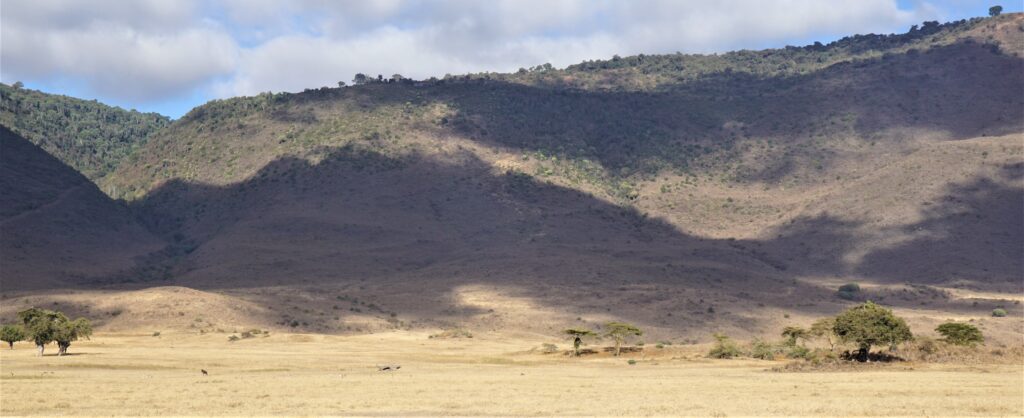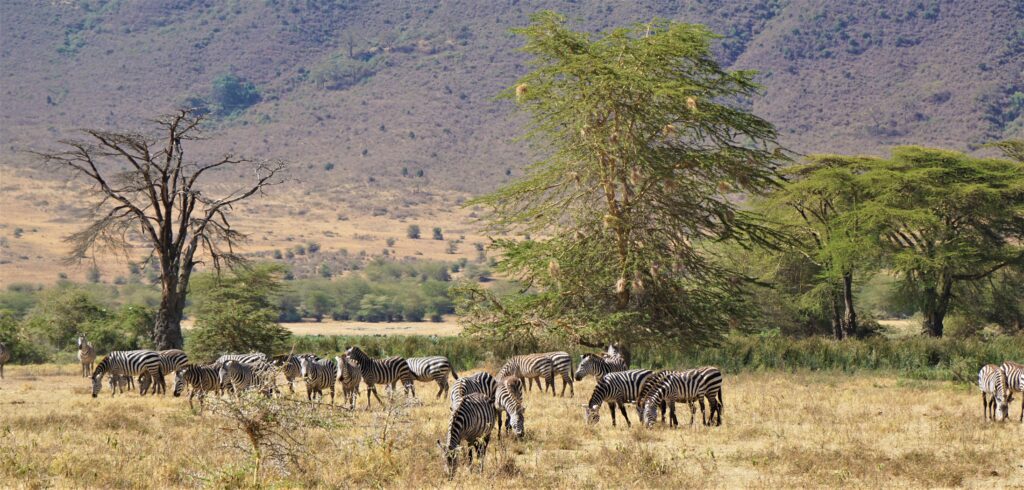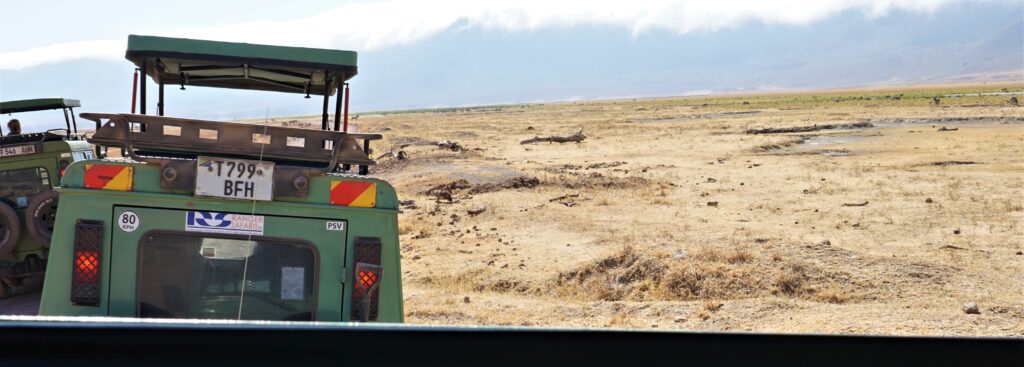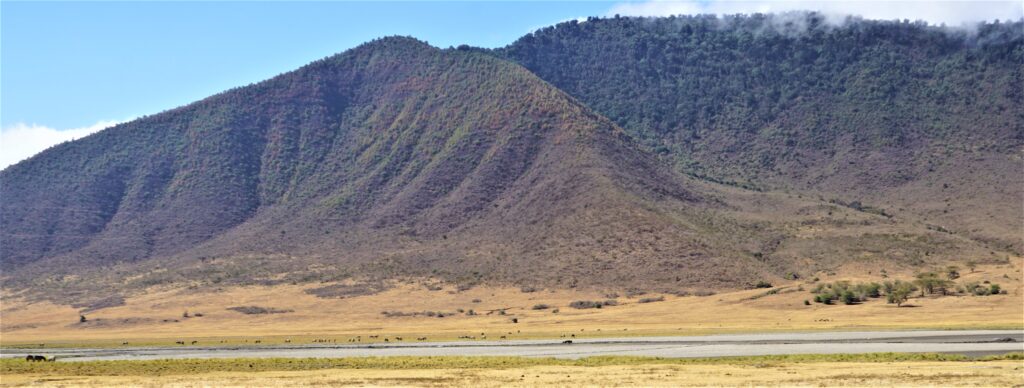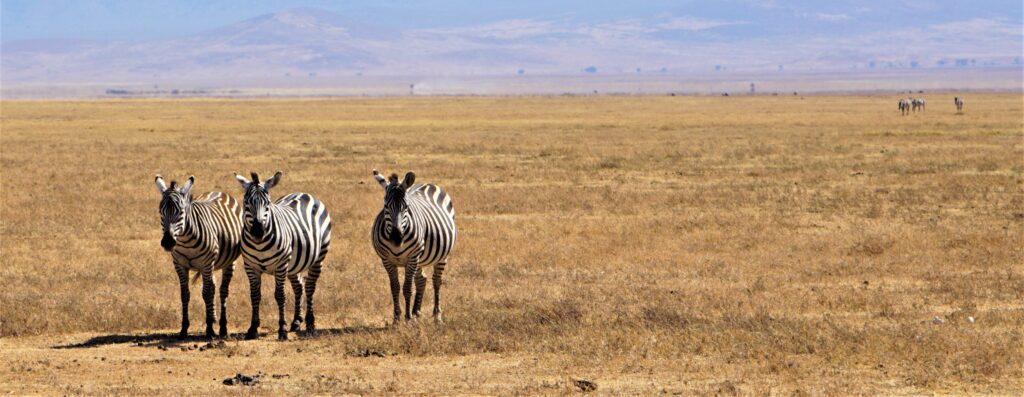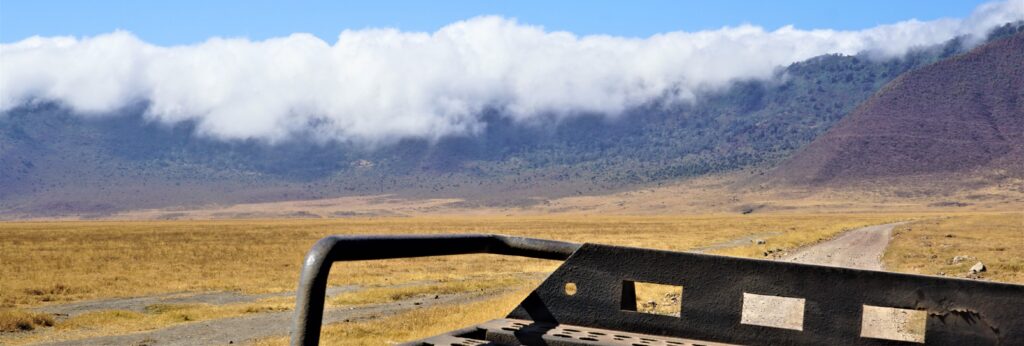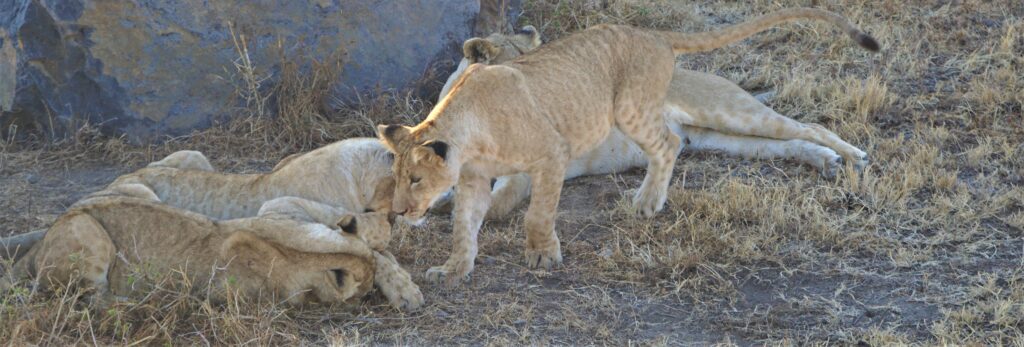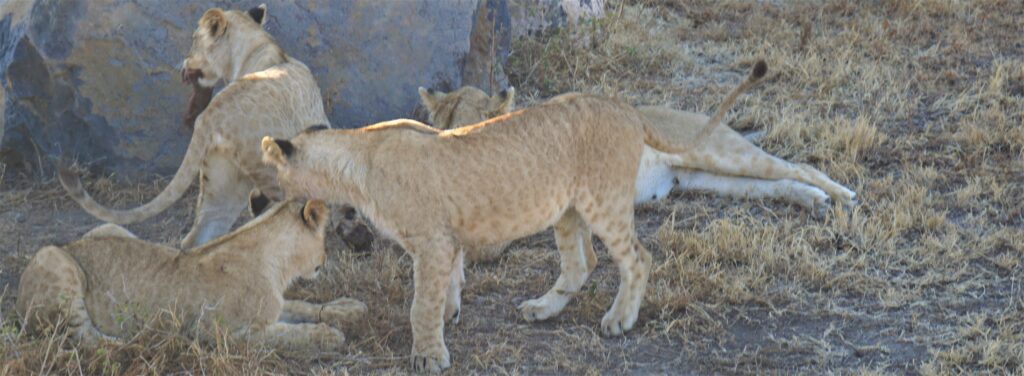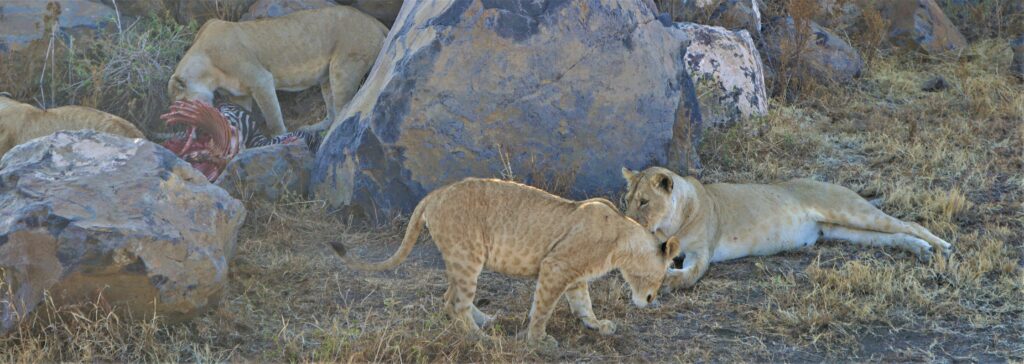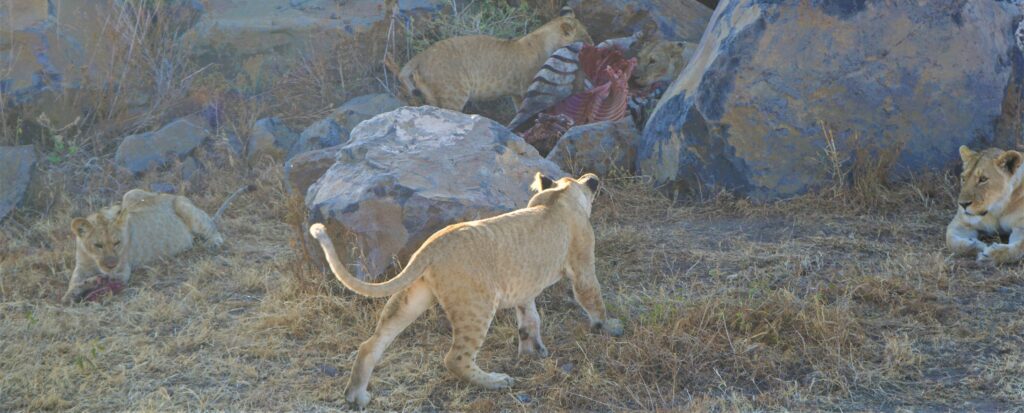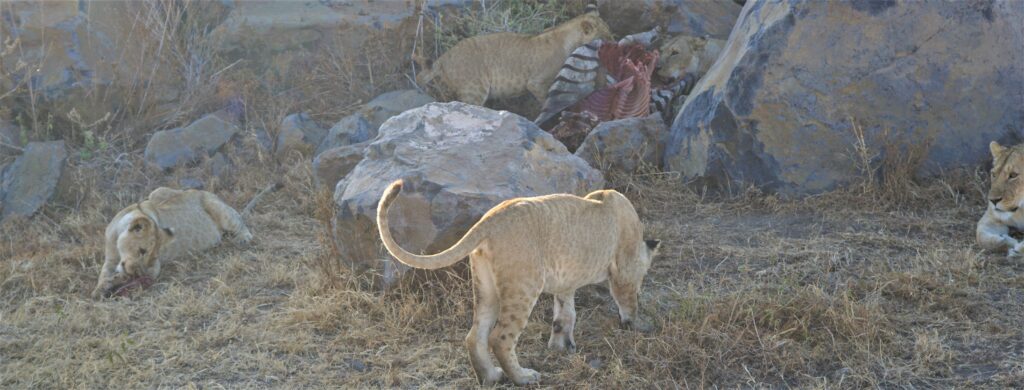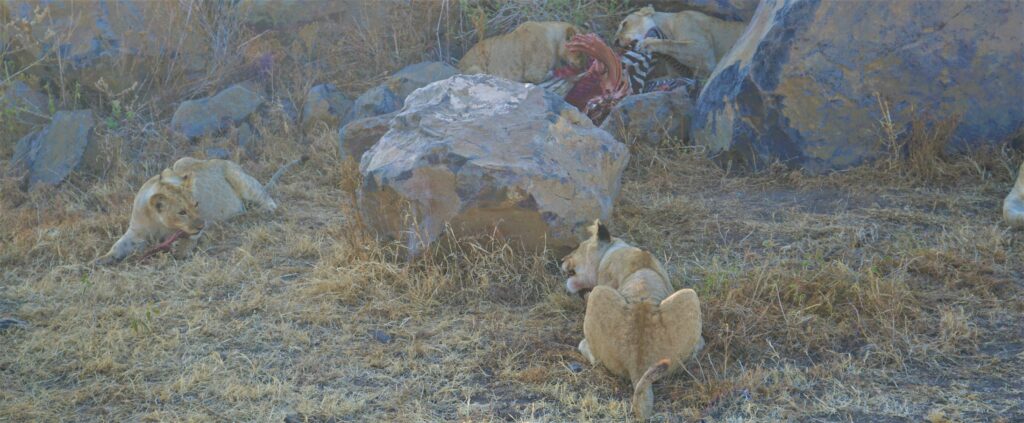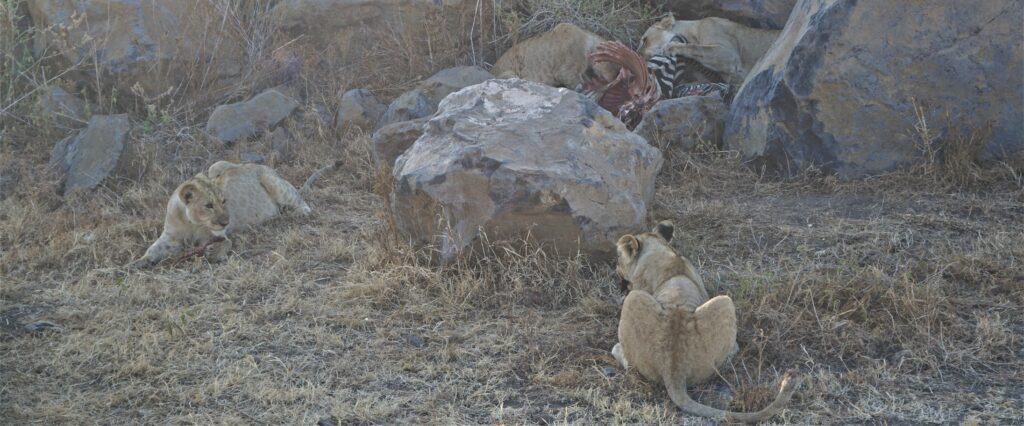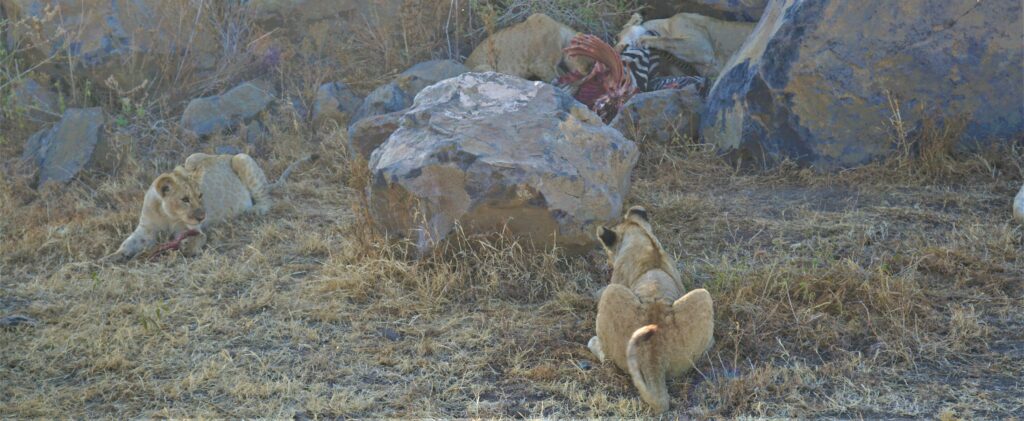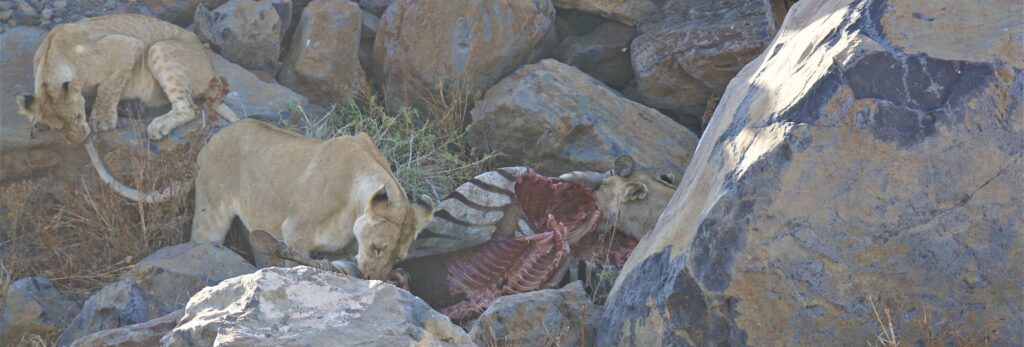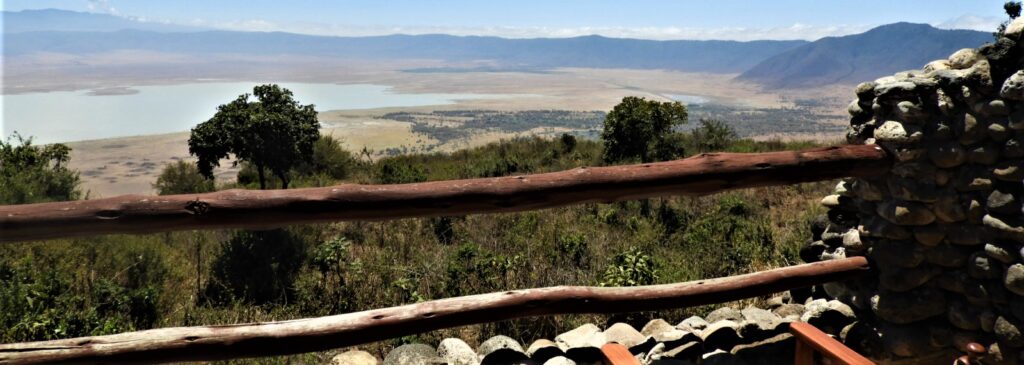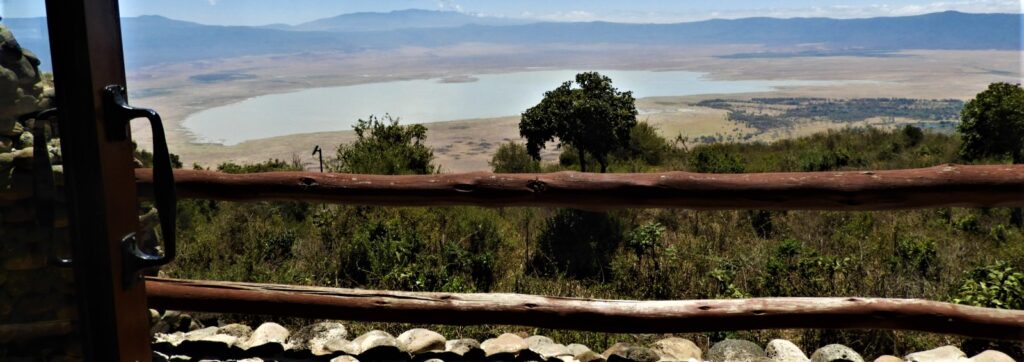Archive for September 21st, 2022
» posted on Wednesday, September 21st, 2022 by Linda Lou Burton
More From The Floor
Linda Lou Burton posting from Ngorongoro Serena Safari Lodge, Ngorongoro Crater, Tanzania– Rick confirms: the Crater was a great place to spend a day. “The descent road was steep,” he said. “The 4×4 was right on the edge, good thing it was still dark.” He couldn’t give 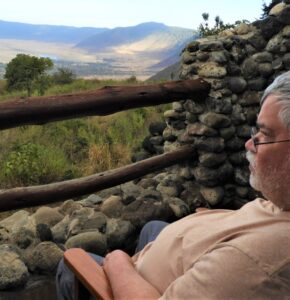 me specifics on the route they followed during the day; mostly a hodge-podge back-and-forth depending on where animals were spotted at a given point in time and information exchanged between drivers. “Not like Disneyland, where you know the Dancing Elephants will dance at 3:00 PM sharp and you buy a ticket for 3 PM!” They saw the lions having breakfast early on; they ate their own Boxed Breakfast – a boiled egg and pastries – “somewhere near a tree.” He switched between cameras; sometimes his phone; sometimes his Sony with the zoom lens. His photos illustrate what I observed from my balcony as I studied the map I’d bought the day before at the Visitor Center, trying to pinpoint specific places. The Crater has a variety of surprising landscapes! Ngoitokitok Springs with its picnic area is on the eastern edge of the Crater,
me specifics on the route they followed during the day; mostly a hodge-podge back-and-forth depending on where animals were spotted at a given point in time and information exchanged between drivers. “Not like Disneyland, where you know the Dancing Elephants will dance at 3:00 PM sharp and you buy a ticket for 3 PM!” They saw the lions having breakfast early on; they ate their own Boxed Breakfast – a boiled egg and pastries – “somewhere near a tree.” He switched between cameras; sometimes his phone; sometimes his Sony with the zoom lens. His photos illustrate what I observed from my balcony as I studied the map I’d bought the day before at the Visitor Center, trying to pinpoint specific places. The Crater has a variety of surprising landscapes! Ngoitokitok Springs with its picnic area is on the eastern edge of the Crater, 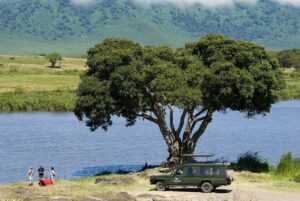 east of Gorigor Swamp; Lerai Forest in the southwest, fairly close below the Serena Lodge. My map stars a number of Points of Interest: Old German Farm Ruins; Goose Ponds and Hippo Pool in Mandust Swamp; Tatoga Ritual Site on the western edge of Lake Magadi. Senato Springs. Ololowaru Springs. Approximately 25,000 large animals live in the Crater. Large mammals include elephants, black rhinos, Cape buffalo, and hippos. Other ungulates: blue wildebeest, Grant’s zebra, eland, Grant’s and Thomson’s gazelles, and waterbucks; cheetah and leopard are rarely seen. Absent are giraffe and crocodile. Although the Crater is a “natural enclosure” for most wildlife, many wildebeest and zebra vacate the Crater in the wet season. Cape buffalo stay; their highest numbers are during the rainy season. Take a look at some of the pictures Rick took on September 21, 2022, down on the Floor. A variety of landscapes, a fair number of animals, and — other folks taking pictures!
east of Gorigor Swamp; Lerai Forest in the southwest, fairly close below the Serena Lodge. My map stars a number of Points of Interest: Old German Farm Ruins; Goose Ponds and Hippo Pool in Mandust Swamp; Tatoga Ritual Site on the western edge of Lake Magadi. Senato Springs. Ololowaru Springs. Approximately 25,000 large animals live in the Crater. Large mammals include elephants, black rhinos, Cape buffalo, and hippos. Other ungulates: blue wildebeest, Grant’s zebra, eland, Grant’s and Thomson’s gazelles, and waterbucks; cheetah and leopard are rarely seen. Absent are giraffe and crocodile. Although the Crater is a “natural enclosure” for most wildlife, many wildebeest and zebra vacate the Crater in the wet season. Cape buffalo stay; their highest numbers are during the rainy season. Take a look at some of the pictures Rick took on September 21, 2022, down on the Floor. A variety of landscapes, a fair number of animals, and — other folks taking pictures!
Next Post: More About The Lodge and the Surrounding Area
Ngorongoro Serena Safari Lodge https://www.serenahotels.com/ngorongoro/accommodation
» posted on Wednesday, September 21st, 2022 by Linda Lou Burton
A 10-Minute Slice
Linda Lou Burton posting from Ngorongoro Serena Safari Lodge, Ngorongoro Crater, Tanzania– Another promise kept. Partly. I promised a Post with Rick’s photos from his day in the crater, but gee, when I started looking at his photos, one 10-minute segment rose to the top like cream in a bucket of fresh Jersey milk. So here goes, a Beatrix Potter kind of story. For background, you need to know this: the lion population in Ngorongoro Crater is denser 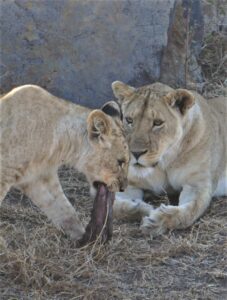 than anywhere else in Africa. Not the most lions of any protected area, but the most per square mile of land. And, they have their own ingrown quirks. Remember this: the Crater is a CLOSED area. The caldera is 100 square miles of land filled with grasses, water sources, and cover, often called a Garden of Eden. In other areas, such as the Serengeti-Maasai Mara, animals migrate by the millions in a year-round cycle, following food sources. In the Crater, they don’t have to. Climb Every Mountain isn’t their theme song; they just stay put! Rick and the gang came upon this pride (family) of Mom and Kids at meal time. Does Roger get to keep his chunk of zebra meat? Do his brothers manage to snatch it away? How does Mom manage the standoff? A cute (and typical kids!) story, any way you slice it.
than anywhere else in Africa. Not the most lions of any protected area, but the most per square mile of land. And, they have their own ingrown quirks. Remember this: the Crater is a CLOSED area. The caldera is 100 square miles of land filled with grasses, water sources, and cover, often called a Garden of Eden. In other areas, such as the Serengeti-Maasai Mara, animals migrate by the millions in a year-round cycle, following food sources. In the Crater, they don’t have to. Climb Every Mountain isn’t their theme song; they just stay put! Rick and the gang came upon this pride (family) of Mom and Kids at meal time. Does Roger get to keep his chunk of zebra meat? Do his brothers manage to snatch it away? How does Mom manage the standoff? A cute (and typical kids!) story, any way you slice it. 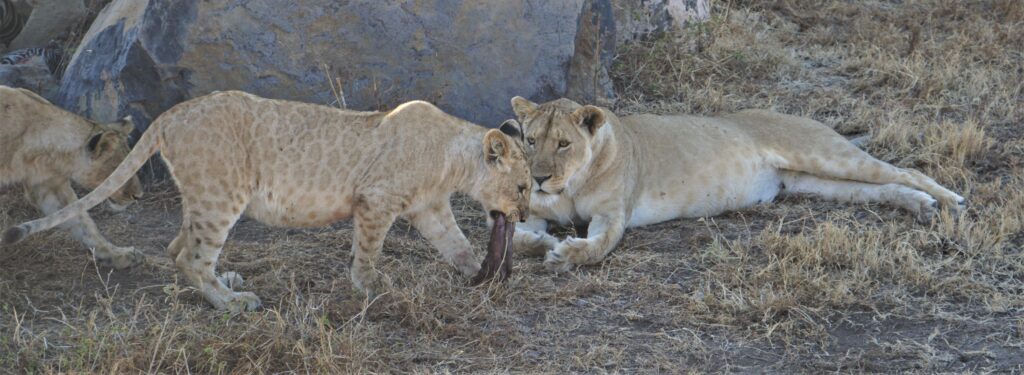
Research on Ngorongoro Crater Lions https://kopelion.org/ngorongoro-lions/
This is KopeLion: KopeLion strives to foster human-lion coexistence in Ngorongoro Conservation Area. Here intensifying human-wildlife conflicts has been tough on the lions. In the last decades, the lions have begun to disappear entirely from their former ranges, separating the famous Ngorongoro Crater lions from the Serengeti. The area’s mission for harmonious coexistence is collapsing, with both people and wildlife losing out. KopeLion was founded in 2011 with the aim to change this trend. By working directly with residents, KopeLion strives for sustainable human-lion coexistence in Ngorongoro for the benefit of both people and lions. KopeLion, comprised of local experts and international scientists, employs former lion hunters to actively protect the remaining lions and reduce conflicts. Our work builds upon data collected over the last 50 years, representing the best-known, best-studied lions in the world. This offers the unique opportunity to measure the effects of our efforts on a population of lions, studied for generations.
The Ngorongoro Crater lion population is uniquely important. Studied almost continuously since 1963, it is the best-known, best-studied lion population in the world. Having become physically separated from the lion population in the nearby Serengeti National Park, the Crater lions have become a textbook example of the challenges facing an isolated inbred population. Our ongoing efforts to restore the connection between the Serengeti and the Crater offer a rare opportunity to measure the effects of lion conservation efforts in a population whose every member is individually recognized and observed over its entire lifespan. We receive a wealth of data on fine-scale movement, behaviors, and prey choice from a few “multi-use area lions” that we managed to GPS collar. One of the striking findings is lions’ capacity to adapt to living among people and livestock. While they clearly avoid areas with settlement and activities in the daytime, they seem to hesitate little to pass close by homesteads in the night.
Next Post: More From The Crater Floor
» posted on Wednesday, September 21st, 2022 by Linda Lou Burton
To Die For
Linda Lou Burton posting from Ngorongoro Serena Safari Lodge, Ngorongoro Crater, Tanzania– A promise kept. My room at Ngorongoro Serena Lodge has a splendid, to-die-for  private balcony overlooking the Crater, just as promised. Nothing is visible from my own private balcony but the Crater. Just: CRATER. I am happy with that. It’s Rick’s view too, but he’s down IN Crater today, while I am sitting on my (at this moment) own private balcony, looking AT it. Kinda makes me feel like God or something. At worst, an eagle. I started looking at Crater at 5:50 AM; that’s when the sun’s rays pinked it to life. Rick was long gone by then, and it was chilly on the balcony, but I made myself a cup of tea, wrapped a blanket around, and just sat there looking. Then, my head filled with images of crater-from-my-own-balcony, I crawled back into bed, still hoping to catch up on desperately needed sleep.
private balcony overlooking the Crater, just as promised. Nothing is visible from my own private balcony but the Crater. Just: CRATER. I am happy with that. It’s Rick’s view too, but he’s down IN Crater today, while I am sitting on my (at this moment) own private balcony, looking AT it. Kinda makes me feel like God or something. At worst, an eagle. I started looking at Crater at 5:50 AM; that’s when the sun’s rays pinked it to life. Rick was long gone by then, and it was chilly on the balcony, but I made myself a cup of tea, wrapped a blanket around, and just sat there looking. Then, my head filled with images of crater-from-my-own-balcony, I crawled back into bed, still hoping to catch up on desperately needed sleep.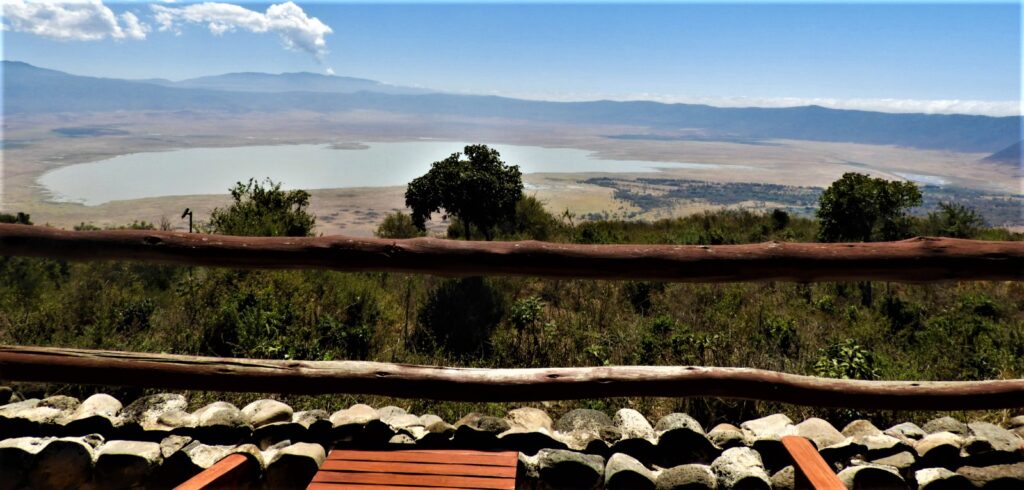
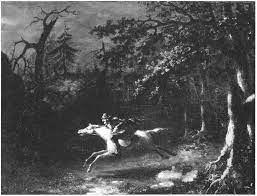 We didn’t get to the Lodge until 7:30 last night; after check-in and dinner and everything else, lights out was way after 10. Our drive from the Visitor Center (where Ben pulled his double-cross) was like something from a Washington Irving tale; the Headless Horseman riding through the dark at break-neck speed? Instead of a horse, we were in a 4×4 on a winding, rocky, unlit stretch of road going up the side of a mountain. Willy did his best, God love his soul, driving fast; we were running two hours late. A safari driver expects to drive in daylight hours, stopping frequently to watch animals doing animal things, right? A frightened baby buffalo was the only thing we saw in that wild ride, caught in our headlights as we rounded a curve.
We didn’t get to the Lodge until 7:30 last night; after check-in and dinner and everything else, lights out was way after 10. Our drive from the Visitor Center (where Ben pulled his double-cross) was like something from a Washington Irving tale; the Headless Horseman riding through the dark at break-neck speed? Instead of a horse, we were in a 4×4 on a winding, rocky, unlit stretch of road going up the side of a mountain. Willy did his best, God love his soul, driving fast; we were running two hours late. A safari driver expects to drive in daylight hours, stopping frequently to watch animals doing animal things, right? A frightened baby buffalo was the only thing we saw in that wild ride, caught in our headlights as we rounded a curve.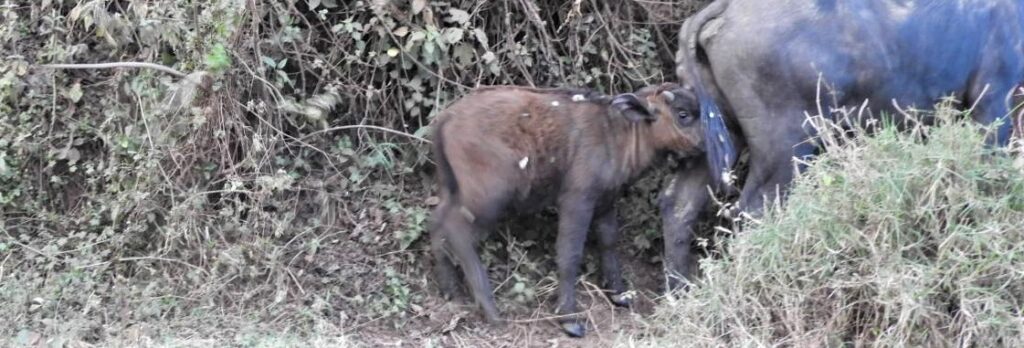
Later I’ll reflect on (and probably laugh about) all the things that have gone haywire in the first two days with Ben as our guide. But today, I have my balcony!
Look at what I looked at as the day progressed. All rooms in this two-story Lodge overlook the same awe-inspiring spectacle: The Ngorongoro Crater, the world’s largest inactive, intact and unfilled volcanic caldera. It is 2,000 feet deep and its floor covers 100 square miles. Lake Magadi is the seasonal salt lake in the center of the crater; there are many springs and swamps on the crater floor, important water supplies for the animals and the local Maasai. Note in some photo zooms trees, swamps, vehicles, and animals.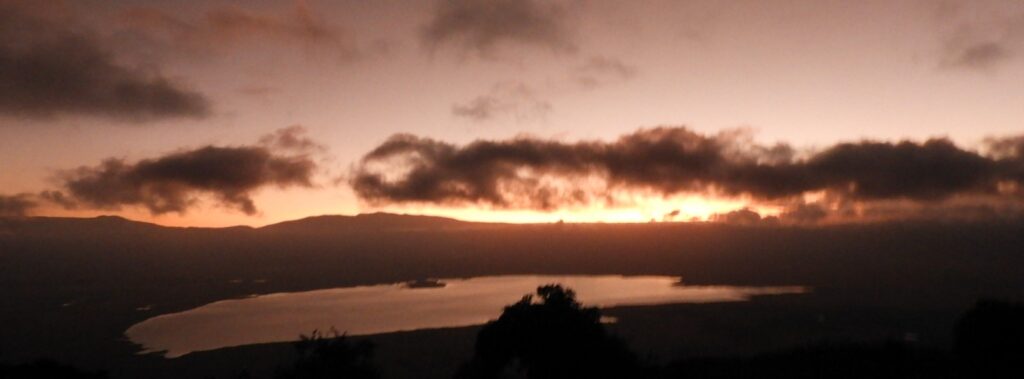
Ngorongoro Serena Safari Lodge https://www.serenahotels.com/ngorongoro
Next Post: Rick’s Photos From In The Crater

